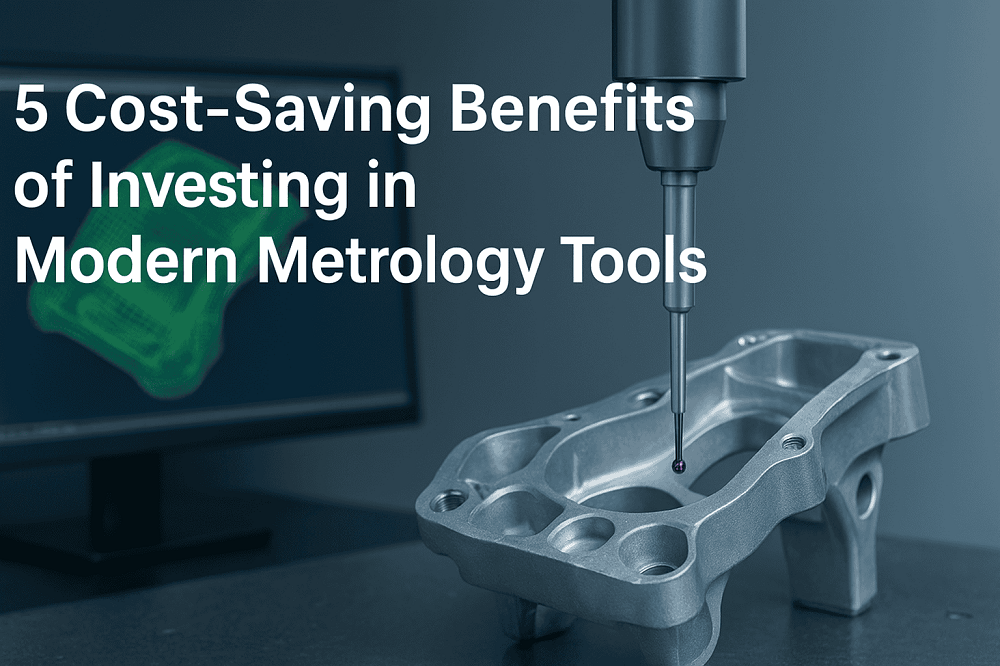
5 Cost-Saving Benefits of Investing in Modern Metrology Tools
In the fast-evolving manufacturing world, inefficiencies and hidden expenses can quietly erode your profits. Traditional quality control methods often fall short, leading to wasted materials, extended production times, and costly errors. Modern metrology tools, however, offer a smarter solution. These advanced instruments not only improve measurement accuracy but also help businesses optimize processes, reduce operational costs, and increase overall efficiency. For companies in Melbourne, especially those considering instrumental sales Melbourne, adopting these technologies is a strategic move that pays off in both quality and savings.
1. How Modern Metrology Tools Reduce Scrap and Rework
Scrap and rework are among the most direct contributors to production waste. One out-of-spec part can trigger a domino effect of material waste, lost labor, and delayed schedules.
Precision and Accuracy: Tools like Coordinate Measuring Machines (CMMs) and laser scanners provide highly precise measurements, enabling manufacturers to detect dimensional errors early in production. Correcting issues at the source prevents defective batches and reduces material waste.
Real-Time Feedback: Advanced instruments offer live data monitoring, allowing operators to adjust machinery instantly if parts start trending out of tolerance. This proactive approach prevents costly post-production fixes.
Example Scenario: A mid-sized engineering firm was facing a 45% scrap rate on machined components due to minor tool misalignments. After adopting a high-resolution optical CMM, they identified the problem quickly, cutting scrap by nearly half within the first month. This translated into substantial material and labor savings.
2. Enhanced Product Quality and Fewer Returns
Consistently delivering high-quality products protects your brand and reduces costly returns.
Accurate Specifications: Modern metrology instruments ensure products meet exact design requirements, preventing in-field failures.
Documented Quality: Automated reports provide verifiable proof of compliance, essential for regulated industries like aerospace or medical devices.
Customer Trust: Reliable quality builds customer loyalty, reducing marketing costs and encouraging repeat business. Long-term savings from fewer returns and higher customer retention often surpass the initial investment in advanced metrology.
3. Lower Labor Costs Through Automation
Labor is a significant operational cost, and modern metrology instruments help optimize workforce efficiency.
Reduced Need for Highly Skilled Operators: User-friendly interfaces and automated software allow more personnel to operate measurement tools without intensive training, freeing experts for complex tasks.
Minimized Human Error: Automation ensures precise and consistent data collection, reducing rework and wasted time from mistakes.
Increased Employee Productivity: Workers spend less time on manual measurement and more on machine operation, maintenance, and process improvement, lowering labor cost per unit.
4. Predictive Maintenance for Cost Savings
Maintenance can be a major expense if handled reactively. Modern metrology enables predictive strategies to avoid costly downtime.
Tool Wear Monitoring: Regular measurements can detect subtle tool wear before it affects production, allowing timely replacements during planned downtimes.
Machine Performance Analysis: Instruments such as laser trackers verify machine alignment, identifying potential issues before they lead to defective parts.
Optimized Maintenance Schedules: Data-driven, condition-based maintenance ensures service is performed only when necessary, saving both time and money compared to fixed-schedule plans.
5. Faster Time to Market and Higher Efficiency
Speed is a critical factor in today’s fast-moving markets. Modern metrology tools help manufacturers accelerate inspection processes, eliminate bottlenecks, and keep production flowing smoothly.
This efficiency reduces lead times, allowing products to reach the market faster without sacrificing quality. The combination of time savings, streamlined operations, and improved accuracy boosts overall profitability.
Conclusion
Modern metrology tools are not just instruments they are strategic assets that drive cost savings, improve product quality, and enhance operational efficiency. From reducing scrap and accelerating production to minimizing labor costs and enabling predictive maintenance, these tools offer a clear financial advantage. For businesses in Melbourne exploring instrumental sales Melbourne, adopting advanced metrology solutions is a smart investment that can transform both your manufacturing process and your bottom line.

